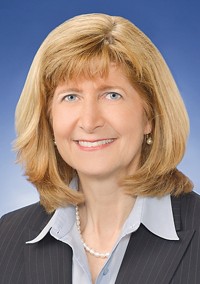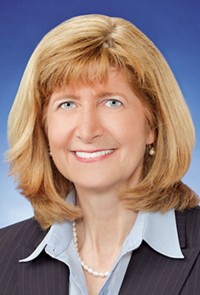Advertisement
Grab your lab coat. Let's get started
Welcome!
Welcome!
Create an account below to get 6 C&EN articles per month, receive newsletters and more - all free.
It seems this is your first time logging in online. Please enter the following information to continue.
As an ACS member you automatically get access to this site. All we need is few more details to create your reading experience.
Not you? Sign in with a different account.
Not you? Sign in with a different account.
ERROR 1
ERROR 1
ERROR 2
ERROR 2
ERROR 2
ERROR 2
ERROR 2
Password and Confirm password must match.
If you have an ACS member number, please enter it here so we can link this account to your membership. (optional)
ERROR 2
ACS values your privacy. By submitting your information, you are gaining access to C&EN and subscribing to our weekly newsletter. We use the information you provide to make your reading experience better, and we will never sell your data to third party members.
Comment
Embracing uniqueness to develop a more inclusive culture
by Ingrid Montes, ACS Director-At-Large
November 4, 2018
| A version of this story appeared in
Volume 96, Issue 44

As a Latina and as a woman, I have gone through experiences that have shaped my life and strengthened my commitment to diversity and inclusion. I firmly believe that we can all take actions to promote a more inclusive culture in our workplaces.
My three main objectives with this Comment are to explain what diversity and inclusion are, identify the differences between the two, and reflect on the actions needed to embrace both diversity and inclusion.
Diversity can come in many forms. For example, something as simple as color can represent different things for different people and evoke different feelings. Consider what the color red means in different religions: achievements, wisdom, fortune, and dignity in Buddhism; temptation, repentance, and purification in Christianity; and joy, happiness, and life in Judaism. These differences represent religious diversity. Now let’s consider what red means in different regions of the globe: love, danger, and action in the West; danger, caution, and evil in the Middle East; and prosperity and good fortune in East Asia. This represents geographic diversity. These are only two aspects of the broader meaning of diversity.
The Cultural Iceberg Model, developed by anthropologist Edward T. Hall, uses the iceberg as an analogy for culture. The portion of an iceberg that can be seen above water is only a small part of a much larger whole. Similarly, in our culture, external manifestations are influenced by innate and broader components of culture, as well as fundamental attitudes and values. Different cultural groups share similar fundamental values, such as respect for family, but these values are not necessarily interpreted in the same way. In addition, powerful forces affect our way of seeing the world and govern our actions and behaviors, which are the part that others can observe or perceive. Then, like an iceberg, there are characteristics that we can appreciate only by understanding and analyzing cultural, cognitive, educational, or socioeconomic differences and taking into account other unobservable factors.
With this background information, let’s think in broader terms about the different aspects of diversity. These include age and generational differences, race, gender, ethnicity, sexual orientation, religion, physical attributes, education, job title, function, skills, disability, height and weight, marital status, and language and accent. Everyone is unique, and no single person is a complete representation of a certain group because everyone is exposed to different situations.
Some people and organizations perceive diversity as a list of underrepresented groups, and by having these groups represented, they consider themselves to be diverse. The real progress comes when we understand that the concept and practice of diversity is not enough; we need to turn those thoughts and perceptions into acts of inclusion. Inclusion is about more than tolerating differences; it’s about creating an environment that welcomes everyone’s uniqueness and respects their ideas, perspectives, and beliefs. It is about harnessing the richness of ideas and appreciating, empowering, and promoting an authentic sense of belonging. I like how
iversity has been described as what you have, whereas inclusion is what you do. “Inclusion is a measure of culture that enables diversity to thrive,” says Rita Mitjans, chief diversity and corporate social responsibility officer at human capital management company ADP. Inclusion is not a word or discussion; it is an action, it is a call to nurture a culture without boundaries, and it is the belief that everyone brings their unique perspectives to the table. It embraces a wide range of talents and skills, a variety of viewpoints and approaches to problems, and opportunities to improve decision-making that leads to creativity and innovation.
Advertisement
The American Chemical Society is committed to promoting diversity and inclusion through a core value in its strategic plan, the ACS Committee on Minority Affairs (CMA), and the Diversity Advisory Board, which has representatives from many other committees and divisions. Last year, the ACS Board of Directors approved a revised “Statement of Diversity & Inclusion” put forth by CMA. We all know that commitment from ACS leadership and mentoring programs are critical ingredients to support diversity. However, what we really need in order to fully embrace diversity and its uniqueness is a culture change, which requires everyone to take action.
I encourage you to reflect on how you can do more to embrace diversity, convert your thoughts into actions, and encourage the development of an inclusive culture. I would like to finish with one of my favorite thoughts, by Lord Thomas Dewar: “Minds are like parachutes—they only function when open.”
To develop a culture of inclusion, we need your support and your open minds. If you have ideas or comments, please share them with me at i.montes@acs.org. I look forward to hearing from you all.
Views expressed are those of the author and not necessarily those of C&EN or ACS.





Join the conversation
Contact the reporter
Submit a Letter to the Editor for publication
Engage with us on Twitter